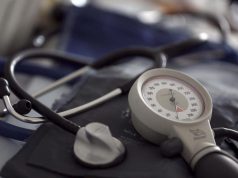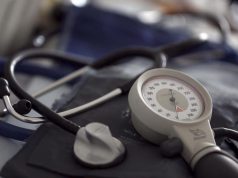
Legendary singer Tina Turner, who died this week at the age of 83 after a long illness, has written about her history of high blood pressure and kidney disease, leading to a kidney transplant.
RELATED: ‘Queen of rock ‘n’ roll’ Tina Turner dies at 83
Turner should be applauded for her willingness to share her medical history to publicize the importance of looking after your kidneys, just months before she died.
Turner’s family has not confirmed how she died. But Turner’s openness with her long-standing illness is a reminder for us all to keep an eye on our blood pressure, and to control it, if we are to avoid complications.
Here’s why controlling your blood pressure is so important and what can happen if we don’t.
Why is high blood pressure linked to kidney disease?
There’s a bi-directional relationship between blood pressure and kidney disease.
That means high blood pressure increases the risk for kidney disease and once you have kidney disease, it further promotes high blood pressure. It’s a vicious cycle.
In some cases, it’s hard to determine which one came first.
Uncontrolled blood pressure exerts a lot of pressure on the kidney. That leads to scarring and damage. If we looked inside the kidney, we’d see large areas of scarring. Once you have scarring, that tissue isn’t working properly and can start to leak protein into the urine. That then pushes up the risk of progressive kidney disease, leading to kidney failure, heart disease and premature death.
The kidney itself is integral to maintaining blood pressure. Kidneys obviously maintain fluid balance by passing urine, but they also have important hormonal jobs which are vital to maintaining blood pressure.
So, once you get kidney disease, blood pressure can be really hard to manage. It’s like a hammer and nail, and the nail is the kidney. If you have high blood pressure, the hammer is hitting the nail really, really hard.
Are there certain symptoms to look out for?
Both high blood pressure and kidney disease are what we call “clinically silent”, so many people don’t realise they have problems until it is very far along.
Often a person with high blood pressure has no symptoms. There are times, in extreme cases, where people may get headaches or a feeling of thumping in the head. But their first sign may be a stroke or heart attack or some other major complication. That’s why checking blood pressure on a regular basis is smart.
For kidney disease, you can lose up 90% of kidney function before symptoms develop. They can be clinically silent right up until kidney failure. When symptoms do arrive, they can be very vague – things like poor concentration or feeling tired.
Often people just put it down to winter, being busy or getting older.
So we recommend screening for kidney disease if you have high blood pressure, diabetes, heart disease, excess abdominal weight, a history of smoking, acute kidney injury or a family history of kidney disease. This should be done on a one- to two-year basis.
What are the treatments?
In the past five years, there have been a swathe of newer medicines that bring down blood pressure and protect the kidney. For around 20 years, we have had a class of drugs called renin-angiotensin system blockade (usually just shortened to RAS blockade).
But more recently, we have a new group of medicines called SGLT2 inhibitors, which have really changed the landscape of kidney disease. The Therapeutic Goods Administration has just approved another medicine called finerenone, which is a non-steroidal MRA.
These have all been shown to protect the kidney, as opposed to just treating symptoms. They slow the progression of the disease and have shifted the paradigm to kidney preservation.
And it’s really crucial you address the lifestyle factors that increase your risk.
How can I reduce my risk?
Don’t smoke. Being a smoker significantly increases your risk of high blood pressure and kidney disease.
Eat a nutrient-dense diet, including fresh, whole foods that are in season and avoid ultra-processed food and sugar. This approach will help to control blood pressure and protect the kidney.
Do all the usual things – get good sleep, maintain an active lifestyle and manage your stress. If you have a family history of kidney disease, that may prompt you to get checked.
Do the Kidney Health Australia quiz and if you are deemed to be at risk, go to your GP to get a kidney health check. That involves a blood pressure check, urine test and a blood test.
Kidney disease is becoming more common
The number of people with kidney failure is increasing dramatically. According to the Australian Institute of Health and Welfare, the number of Australians receiving kidney replacement therapy (either on dialysis or living with a transplant) more than doubled between 2000 and 2020, from 11,700 to 27,700. Over half of those receiving kidney replacement therapy were on dialysis.
While a kidney transplant improves quality of life and can extend a person’s life, it’s important to remember that high blood pressure can still persist and often requires ongoing treatment.![]()
Karen Dwyer, Professor, School of Medicine, Deakin University
This article is republished from The Conversation under a Creative Commons license. Read the original article.








